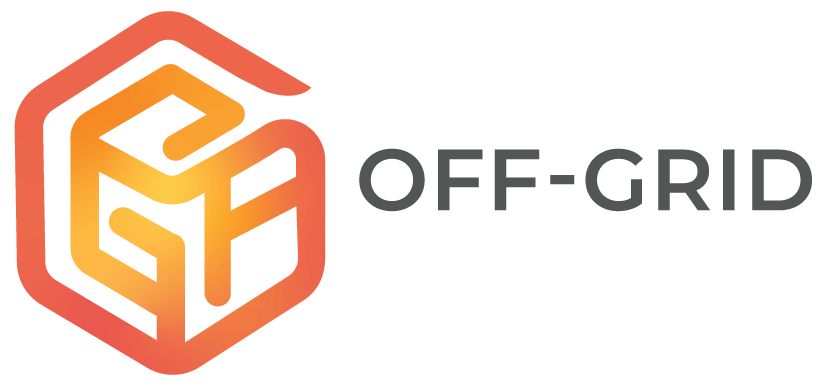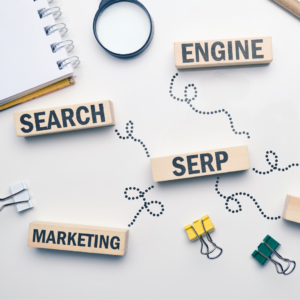Discover how to turn browsers into buyers with effective remarketing strategies that deliver results. Our no-nonsense guide serves up seven actionable tactics to help you reconnect with your audience and drive conversions. Expect clear insights on enhancing ad relevance, optimizing your reach, and converting past visitors into customers, positioning your business for better return on investment.
Key Takeaways
Remarketing is a highly efficient tool for increasing conversion rates by reconnecting with prospective customers, boosting brand recall, and fostering customer loyalty through strategies such as audience segmentation, cross-platform campaigns, and compelling ad content.
Effective remarketing must employ a combination of audience targeting techniques, including the use of Google Ads tools like RLSA and Dynamic Remarketing, as well as Facebook retargeting features like Custom Audiences, Lookalike Audiences, and Facebook Pixel to create personalized and engaging campaigns.
Continual optimization is critical to remarketing success, involving practices such as A/B testing, performance tracking, and strategic adjustments based on data insights to improve conversion rates and combat ad fatigue.
1. Understanding the Power of Remarketing

Remarketing is a potent tool in the digital marketing arsenal. Essentially, it’s a strategy that allows businesses to:
Reconnect with potential customers who have shown interest in their brand but haven’t converted yet
Increase brand visibility and stay top-of-mind with potential customers
Drive conversions and increase sales
Improve ROI by targeting a highly engaged audience
In the ever-evolving digital space, remarketing is a strategic move that sets the successful apart from the rest.
Why? Because when users are targeted with remarketing display ads, they are more likely to convert than those who are not. But that’s not all. Remarketing goes beyond just bringing in new customers. It also helps businesses retain their existing ones. It does this by:
increasing the lifetime value of current customers
building brand loyalty
encouraging repeat purchases
fostering customer engagement
All of these factors ultimately lead to increased sales.
But let’s not forget the power of brand recall. One of the significant benefits of remarketing is that it enhances brand awareness. By keeping your business’s brand visible to users who have engaged with your website or social media, you increase the chances of them remembering you when they’re ready to convert.
Reaching Out to Potential Customers
Reaching out to potential customers is a fundamental part of any remarketing strategy. And that’s where the Google Display Network (GDN) comes in. By providing visibility across various sites and multiple times per day, GDN maximizes the chance of re-engaging interested users.
After all, when a user visits a product page, it shows an indication of their interest – a critical point of engagement for remarketing strategies targeting website visitors.
Boosting Brand Awareness
Boosting brand awareness is another crucial aspect of remarketing. Interactive content, like quizzes, significantly enhances brand awareness by promoting user engagement. Not only does this lead to increased sharing on social media platforms, but it also boosts website traffic.
This, in turn, creates more potential customers to retarget with your remarketing ads.
Enhancing Conversion Rates
While remarketing is an effective strategy, it’s essential to remember that the approach shouldn’t be overly aggressive. Potential discomfort can arise from overly aggressive marketing approaches, which could deter potential customers rather than attract them.
By maintaining a balanced approach, remarketing campaigns can enhance conversion rates, leading to increased revenue.
2. Implementing Effective Remarketing Campaigns

Implementing effective remarketing campaigns requires a holistic approach. It starts with the foundation of pixel-based retargeting, which allows for ads based on specific user actions on the site. This lays the groundwork for creating successful remarketing campaigns that reach the right audience at the right time.
A successful remarketing campaign also requires:
A clear audience definition
Crafting killer remarketing ads
Conversion path analysis to identify pages that lead users towards a higher probability of conversion
Knowing who you’re remarketing to and enhancing remarketing strategies are essential for a successful campaign.
Finally, the landing page plays a key role in remarketing. Well-designed landing pages can significantly increase conversion rates and decrease the cost per click. Furthermore, the choice of retargeting ads can be tailored to suit the user’s online behavior. For instance, dynamic retargeting ads can be created for social media users, while more direct email retargeting strategies may be effective for those less active online.
Audience Segmentation
Audience segmentation is a critical component of effective remarketing. It involves identifying and grouping people based on:
their interests
their habits
their demographics
their recent purchase intent
their interaction with your business
Segmenting different lists of users enables businesses to show different ads depending on which part of the site the users visited, thereby addressing and satisfying the immediate needs and wants of individual customer segments.
Choosing the Right Channels
Choosing the right channels for remarketing is yet another crucial aspect. The Google Display Network, for instance, offers a group of websites where Google display ads can appear, offering ample opportunities for remarketing.
Furthermore, integrating video ads into remarketing strategies can amplify reach when used across diverse platforms such as YouTube, Instagram, Facebook, LinkedIn, and Google.
Crafting Compelling Ads
The success of a remarketing campaign also lies in crafting compelling targeted ads. Tailoring retargeting ads to fit the unique needs and interests of each segment of the target audience can improve engagement and conversion rates in a retargeting campaign. And let’s not forget about combating ad fatigue.
By creating diverse ads and rotating them throughout the campaign, you can ensure that your ads remain fresh and engaging to your audience.
3. Google Ads Remarketing Strategies

Google Ads is a powerhouse when it comes to remarketing. A remarketing ad should be compelling, with a clear call to action, and an emphasis on the unique aspects of products or services to assist users in their decision-making. After all, more than half of conversions are attributed to remarketing ads due to the extensive options and market dynamics influencing consumer purchase decisions.
Remarketing List for Search Ads (RLSA) and Dynamic Remarketing are two powerful tools within Google Ads that can significantly enhance your remarketing efforts. The former allows advertisers to customize their search ads for users who have previously visited their website by adjusting bids, tailoring ads based on user behavior, and using broadened keywords. On the other hand, Dynamic Remarketing improves conversion rates by resonating with user interests.
Both RLSA and Dynamic Remarketing provide businesses with the flexibility and customization they need to reach their target audience effectively. Whether it’s adjusting bids, tailoring ads based on user behavior, or creating dynamic ads that resonate with user interests, these tools offer a variety of features that can enhance a remarketing campaign.
Remarketing Lists for Search Ads (RLSA)
RLSA is a powerful tool that allows advertisers to:
Customize their search ads for users who have previously visited their website
Adjust bids
Tailor ads based on user behavior
Use broadened keywords
By utilizing RLSA, advertisers can ensure that their ads are reaching the right people at the right time.
Furthermore, RLSA campaigns can target keywords that have a high click-through rate but a low conversion rate, indicating potential customers are still in the decision-making process.
Dynamic Remarketing
Dynamic Remarketing improves conversion rates by:
Creating ads that resonate with user interests
Utilizing tools like pixel tracking and custom audiences
Utilizing the Google Display Network to reach a vast array of websites
This makes it an effective platform for remarketing.
By utilizing AI predictions to analyze historical performance and user behavior, Dynamic Remarketing aligns prospective customers with the most relevant and high-performing ads.
4. Facebook Retargeting Techniques

Facebook is another platform that offers a variety of retargeting techniques, including facebook retargeting ads. These techniques, like Custom Audiences, Lookalike Audiences, and Facebook Pixel, allow businesses to create precise targeting based on pre-existing customer lists. This is particularly beneficial in re-engaging individuals who have already shown interest in their website or social media platforms, potentially increasing conversion rates through effective facebook retargeting campaigns.
Custom Audiences on Facebook are created by businesses using existing customer data, enabling targeted advertising to users who have previously interacted with the brand. This technique allows businesses to re-engage with individuals who have already shown interest in their website or social media platforms, potentially increasing conversion rates.
Lookalike Audiences, on the other hand, are generated based on custom audiences to find new people who share similar characteristics with a business’s existing customers. This allows businesses to reach a new set of potential customers who are likely to be interested in their products or services.
Lastly, Facebook Pixel, an analytics tool, allows advertisers to measure the effectiveness of their advertising by understanding the actions people take on their website.
Custom Audiences
Custom audiences on Facebook are created by businesses using existing customer data. This allows for targeted advertising to users who have previously interacted with the brand. By re-engaging with these individuals, businesses can increase their conversion rates, thereby maximizing the effectiveness of their remarketing campaigns.
Lookalike Audiences
Lookalike audiences on Facebook are generated based on custom audiences. This helps businesses find new people who share similar characteristics with their existing customers. By targeting such audiences, businesses can:
Reach a new set of potential customers
Expand their customer base
Increase the likelihood of finding people who are interested in their products or services.
Facebook Pixel
Facebook Pixel is an analytics tool that allows advertisers to:
Measure the effectiveness of their advertising by understanding the actions people take on their website
Track specific user interactions on a website
Enable the creation of targeted and dynamic ads catered to those interactions.
This makes it an invaluable tool in any remarketing campaign.
5. Harnessing Email Marketing for Remarketing Success

Email marketing is another effective solution for retargeting existing customers and keeping them engaged in remarketing campaigns. By segmenting email lists based on users’ previous interactions with a business, you can ensure that your emails are reaching the right people at the right time.
Personalized email campaigns can include tactics such as:
Using the customer’s name
Offering sneak peeks
Showcasing new products
Tailoring ad copy to match the customers’ interest
By making your emails more personalized, you can significantly increase your engagement rates and conversions.
Lastly, offering exclusive deals through email remarketing campaigns can entice customers to complete transactions, such as finalizing an abandoned cart purchase. By providing these exclusive deals, businesses can incentivize customers to make a purchase, thereby increasing their sales.
Segmenting Email Lists
Segmenting email lists is a crucial part of email marketing for remarketing. By excluding users who have already converted and targeting users who have shown interest but have not completed a conversion, businesses can ensure that their emails are reaching the right people at the right time. This can significantly enhance the effectiveness of their email marketing campaigns.
Personalized Messages
Personalizing email messages is another effective strategy in email marketing for remarketing. By engaging customers with exclusive offers in remarketing emails that reflect their previous purchases or interactions with the brand, businesses can significantly increase their engagement rates and conversions.
Exclusive Deals
Offering exclusive deals in remarketing emails is a highly effective strategy. By creating a sense of urgency, these time-sensitive discounts entice users to take advantage of exclusive deals. Increased conversions resulting from this can ultimately lead to increased sales for the business. This can have a significant impact on the company’s bottom line.
6. Utilizing Video and Interactive Content in Remarketing Campaigns
Incorporating video and interactive content in remarketing campaigns can lead to increased engagement, brand awareness, and conversions. Video content is recognized by 93% of marketers as being highly effective in educating buyers, as it can offer tailored and personalized experiences.
Interactive content types that can significantly increase engagement rates include:
Quizzes
Mood quizzes
Idea generators
Interactive landing pages
Real-time calculators
Recommendation quizzes
Not only does this lead to increased sharing on social media platforms, but it also boosts website traffic, creating more potential customers to retarget with your remarketing ads in the realm of online advertising.
Benefits of Video Content
Video content offers numerous benefits in a remarketing campaign. It can:
Quickly capture an audience’s attention
Effectively convey messages
Clearly detail products and services using formats such as explainer videos, service descriptions, and testimonials
And with YouTube’s TrueView ads, businesses have a cost-effective video ad strategy by allowing targeting of audiences while they watch videos, incurring costs only if the video content is viewed.
Interactive Content Examples
Interactive content, such as:
quizzes
mood quizzes
idea generators
interactive landing pages
real-time calculators
recommendation quizzes
can significantly increase engagement rates. Not only does this lead to increased sharing on social media platforms, but it also boosts website traffic, creating more potential customers to retarget with your remarketing ads.
7. Analyzing and Optimising Your Remarketing Campaigns

The key to successful remarketing campaigns is continuous optimization to maintain effectiveness over time, ensuring repeat customers. This requires regular monitoring and updating of campaigns, reflecting the dynamic nature of consumer trends.
A/B testing is a critical tool that enables marketers to compare different versions of retargeting ads, identifying which variations achieve the highest conversions. Furthermore, regular analysis of retargeting ad performance allows for timely adjustments and enhancements to campaign strategies.
Finally, it’s essential to adjust remarketing campaigns based on observed trends and performance data, as ads can lose their effectiveness over time. By making strategic adjustments, marketers can ensure their remarketing campaigns are continually evolving to improve conversion rates.
A/B Testing
A/B testing is a powerful tool for optimizing remarketing strategies. By experimenting with higher impression caps and longer membership durations, businesses can identify which ad variations achieve higher conversions, leading to improved performance.
Tracking Performance
Tracking performance is another crucial aspect of optimizing remarketing campaigns. By monitoring key metrics such as:
Conversion rate
Cost per conversion
Return on investment (ROI)
Clickthrough rate (CTR)
Average order value
Businesses can accurately gauge the success of their remarketing campaigns.
Adjusting Strategies
Adjusting strategies is a critical part of maintaining the effectiveness of remarketing campaigns. By adjusting timing, frequency, and ad content in remarketing campaigns to match consumer behavior patterns, businesses can reduce ad fatigue and maintain the effectiveness of their ads.
Summary
In conclusion, remarketing is a powerful tool for businesses looking to boost their conversions and enhance their brand recall. By implementing effective remarketing campaigns, utilizing platforms like Google Ads and Facebook, incorporating video and interactive content, harnessing email marketing, and continuously analyzing and optimizing campaigns, businesses can significantly improve their digital marketing efforts. If you want to learn more, you can Enrol in Off-Grid Singapore Digital Marketing course titled “Remarketing Mastery: Strategies to Amplify Sales“.
Frequently Asked Questions
What is remarketing in digital marketing?
Remarketing in digital marketing is a strategy used to reconnect with potential customers who have already shown interest in a brand but haven’t made a purchase.
How does Google Ads support remarketing campaigns?
Google Ads supports remarketing campaigns through features like Remarketing Lists for Search Ads (RLSA) and Dynamic Remarketing, enabling customized and dynamic ads. These tools help businesses reconnect with previous visitors and ultimately improve conversion rates.
What are Facebook’s retargeting techniques?
Facebook’s retargeting techniques include Custom Audiences, Lookalike Audiences, and Facebook Pixel, enabling businesses to target specific customer groups effectively. By using these tools, businesses can create precise targeting based on pre-existing customer lists.
How can video and interactive content enhance remarketing campaigns?
Incorporating video and interactive content into remarketing campaigns can boost engagement, brand visibility, and conversions.
Why is analyzing and optimizing remarketing campaigns necessary?
Analyzing and optimizing remarketing campaigns is necessary to ensure sustained effectiveness, identify successful ad variations, and make strategic adjustments based on performance data.




